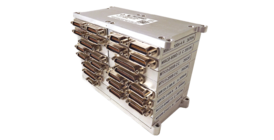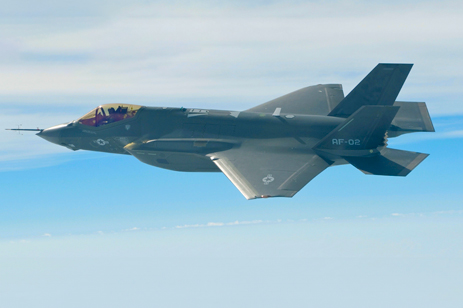Hypersonic platforms provide a challenge for flight test campaigns due to the application’s flight profiles and environments. The hypersonic environment is generally classified as any speed above Mach 5, although there are finer distinctions, such as “high hypersonic” (between Mach 10 to 25) and “reentry” (above Mach 25).
Hypersonic speeds are accompanied, in general, by a small shock standoff distance. As the Mach number increases, the entropy layer of the air around the platform changes rapidly, and there are accompanying vortical flows. Also, a significant amount of aerodynamic heating causes the air around the platform to disassociate and ionize.
From a flight test perspective, this matters because the plasma and the ionization interfere with the radio frequency (RF) channels. This interference reduces the telemetry links’ reliability and backup techniques must be employed to guarantee the reception of acquired data. Additionally, the flight test instrumentation (FTI) package needs to perform optimally in and capture the higher acceleration, temperature, and vibration measurements that the hypersonic vehicle experiences.
Log in and download the white paper to learn more.
Sridhar Kanamaluru
Sridhar Kanamaluru is a Chief Architect and manager of product management within the Aerospace Instrumentation group of Curtiss-Wright. He received his Ph.D. in Electrical Engineering from Texas A&M University in 1996. He has over 30 years of experience in research, product development, and engineering management for microwave, radar, and flight test instrumentation products. He joined Curtiss-Wright, Newtown, in 2013 as Director of Radar and Antenna Systems. He is also a Curtiss-Wright technical fellow.
Stephen Willis
Product Marketing Manager
Stephen Willis is the aerospace test and measurement Product Marketing Manager at Curtiss-Wright Defense Solutions. He has a degree in Electrical Engineering, a Masters in Philosophy for research in mathematical models and their market application for risk assessment, and a PG Dip in marketing and management. His current research interests include data acquisition, recording, and control systems and their applications in enabling a cost-effective route to gather large amounts of data. In particular, applications of interest include flight test, crash-protected recording, and structural/usage monitoring programs. He is the author of several academic papers and magazine articles.




